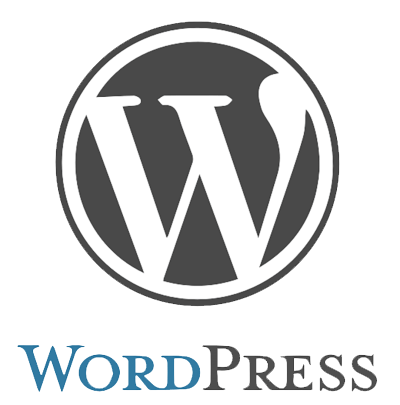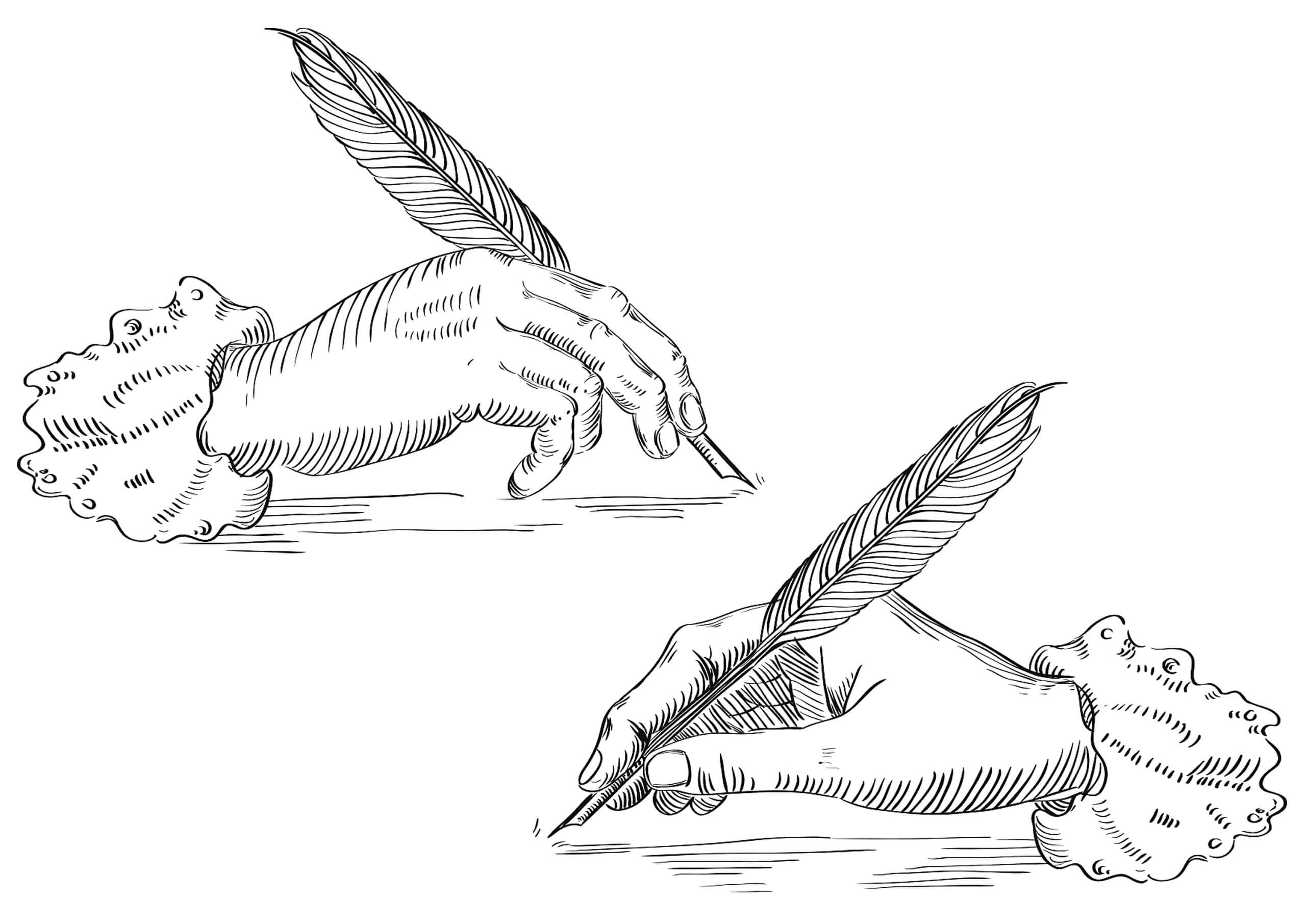WordPress 3-in-1 Web Design Service Process
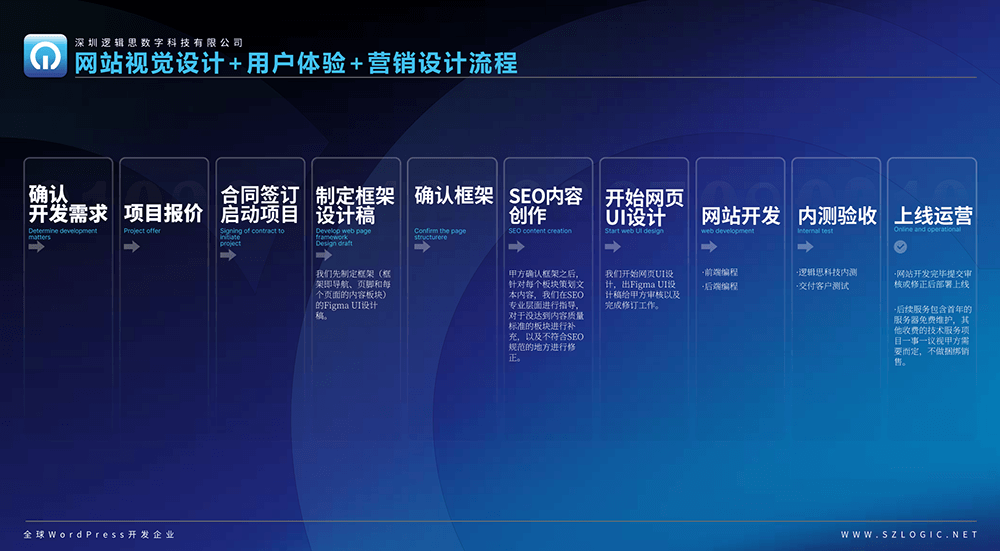
In today's internet environment, WordPress has become one of the most popular website building platforms worldwide. However, different web design and development companies or teams often take varied approaches when offering WordPress website services. Some focus solely on visual design, others emphasize technical development, and some pursue functionality alone. Shenzhen LogicThink Digital has taken a unique path—we specialize in a visual design + user experience + marketing design 3-in-1 approach for WordPress website design and development, delivering customized, integrated solutions tailored to brands, products, and services.
Here, the "marketing design" we emphasize is not just about beautifying page layouts and content presentation. It encompasses a comprehensive system of overall theme planning and SEO strategy implementation, ensuring that the website delivers tangible value—from the first visual impact to user interactions, and finally to search engine exposure. This 3-in-1 website building approach remains niche among WordPress services, but its structured and professional methodology truly helps businesses achieve both brand value and business growth.
In the following content, I will provide a detailed breakdown of our team’s visual design + user experience + marketing design 3-in-1 WordPress website design and development process, allowing clients with website needs to clearly understand each service step and execution detail, so they can determine whether this approach aligns with their business development requirements.
Communicate and Clarify Requirements to Confirm Design & Development Needs

In WordPress website design and development projects, communication is always the core starting point. While the work is essentially a technical service, the involvement of programming and design expertise often creates information asymmetry between the professional and non-professional parties. Clients usually have clear expectations regarding visual effects, interactive features, or overall experience, but may not fully understand the technical implementation behind them. Without sufficient communication, this gap can easily lead to misjudgments and affect project progress.
LogicThink Digital fully understands this, which is why our 3-in-1 service process emphasizes in-depth communication and requirement clarification from the very first step. We help clients clarify the relationship between “what they want to achieve” and “what can actually be implemented,” using professional explanations and case demonstrations to prevent missteps caused by information asymmetry. At the same time, this stage is also crucial for defining the scope of requirements (i.e., service boundaries). Only once the requirements are clear can we proceed along the correct technical implementation path and move on to cost evaluation and quotation.
1. Clarify the demand boundaries
The scope of requirements refers to the achievable range of the project and serves as the foundation for project management. We will break it down layer by layer from the following perspectives:
- Website Structure: Number of pages. The number of pages that need to be designed and developed is an important factor in cost and a common key variable in budgeting.
- Dynamic Effects: Dynamic effects are divided into two types: element-level micro-animations and model-level 3D interactive effects. Element-level micro-animations are included in LogicThink Digital’s 3-in-1 WordPress web design service, while model-level 3D interactive effects are calculated as an additional cost.
- Functional Aspects: Like the number of pages, functional requirements are also a key variable affecting costs in the 3-in-1 WordPress web design service. The 3-in-1 service includes standard website features such as “contact forms, site subscriptions, on-site search, Cookie Banner, product management system, and automatic backups.” Any functions beyond these are considered additional features and require separate development cost estimation.
By confirming each item, clients can clearly see which requirements are mandatory and which can be treated as optional or extended features, forming a clear list of requirements.
2 Verification of demand rationality
During the communication process, some client ideas may be technically challenging or conflict with the website’s target user experience. In such cases, we provide professional correction suggestions to help clients find more reasonable alternatives. For example, if certain complex interactions would significantly slow down loading speed, we propose more efficient implementations that satisfy both user experience and technical logic.
3. Lay the foundation for subsequent processes
After completing the requirement clarification and confirmation, the overall outline of the project gradually becomes clear. Based on this, we can accurately proceed with:
- Feasibility Assessment: Confirm which features can be smoothly implemented within the WordPress framework;
- Quotation Preparation: Provide a reasonable quote based on the scope of requirements and workload;
- Process Planning: Define the phased schedule for design, development, and testing.
In other words, this stage is not only a process for both parties to reach a consensus but also lays a solid foundation for subsequent visual design, user experience optimization, and marketing strategy implementation.
WordPress website design and development project quote
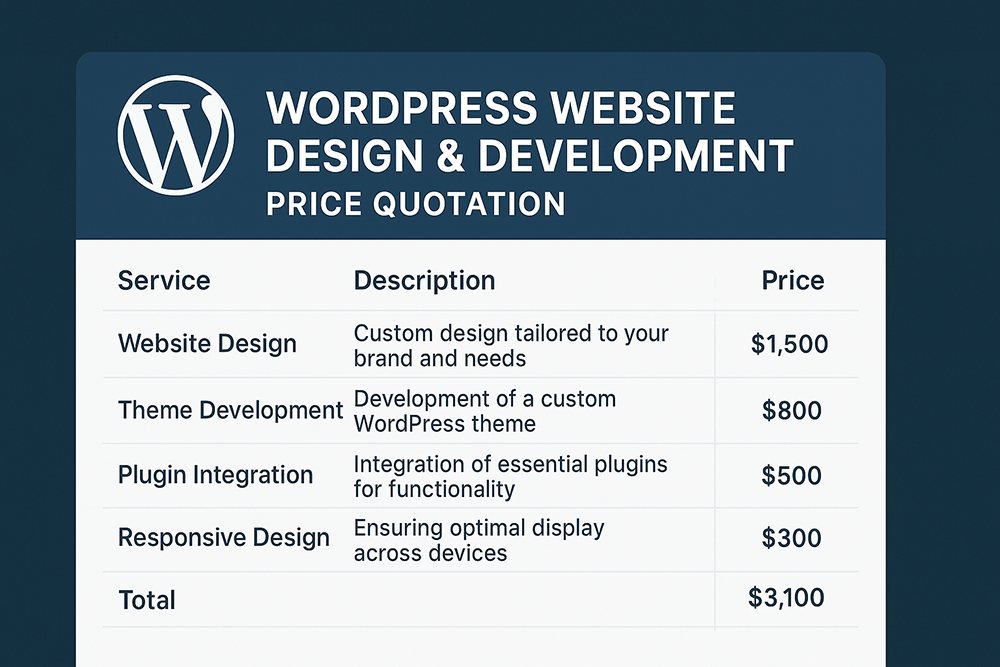
After completing requirement communication and confirmation, the project enters the workload assessment and quotation stage. The focus of this phase is to translate the previously clarified requirements into specific development workloads and, based on this, create a transparent and traceable project requirement quotation. LogicThink Digital consistently adheres to the principles of transparent and adjustable pricing, ensuring that clients can clearly understand the cost structure and make flexible decisions according to their actual situation.
1. Workload calculation and quotation sheet preparation
When assessing the workload, we break down each item according to the requirements list:
- Page Design and Development: Includes the design and front-end implementation of different pages such as the homepage, inner pages, and landing/special pages.
- Additional Feature Module Development: Such as membership systems, e-commerce marketing features, advanced search, quotation systems, 3D product model displays, and other functionalities.
After completing the workload assessment, we will create a Project Requirement Quotation. This quotation lists the cost of each page or feature, allowing clients to clearly see the cost proportion of each requirement.
2. Flexibility and controllability of quotation
In actual project execution, adjustments to requirements are common. We allow clients to make selections based on the quotation and their budget:
- Additional Requirements: If clients propose new feature requests later, we will promptly update the quotation and include the additional cost details.
- Removed Requirements: If clients consider certain features non-essential at the moment or wish to control the budget, they can remove them from the requirements list, and the corresponding total cost will be reduced accordingly.
This flexibility allows clients to find a balance between project objectives and budget control, while also preventing opaque additional costs due to requirement changes.
3 The value of the quotation sheet
A complete project requirement quotation not only presents the costs but also serves as a reference blueprint for project execution:
- Helps clients clearly understand the relationship between costs and requirements;
- Provides the project development team with clear boundaries for the workload;
- Provides a basis for subsequent contract signing and project delivery.
Through this itemized, real-time updated, and transparent quotation mechanism, we ensure that both parties reach a high level of consensus at the start of the collaboration, avoiding disputes caused by information asymmetry.
Sign WordPress Website Design & Development Contract to Kick Off Project

After completing the project requirement quotation and confirming the final design and development costs, if the client confirms their intention to collaborate, the project officially enters the contract signing and initiation stage. This phase not only formally establishes the cooperative relationship between both parties but also serves as a crucial guarantee for the smooth progress of the project.
1. Content and Guarantee of the Contract
The WordPress website construction contract drafted by LogicThink Digital is not only a legal cooperation document but also an execution reference that clearly defines the rights and responsibilities of both parties. The contract includes:
- Protective Clauses: Clearly define the rights and obligations of both parties to ensure a fair collaboration.
- Project Requirement Details: Lists each service and its corresponding cost from the quotation, allowing clients to clearly understand the allocation of funds.
- Delivery Terms: Clearly specify the project’s phased delivery milestones, final delivery standards, and acceptance methods.
- After-Sales Service Details: Specify the scope and timing of maintenance, updates, technical support, and other services to avoid ambiguity.
Through this itemized contract content, both parties can establish a clear consensus before the collaboration begins, preventing subsequent disputes caused by ambiguous information.
2 The significance of this link
The contract signing and project initiation marks a turning point in the entire WordPress visual design + user experience + 3-in-1 service process. From this moment, the collaboration officially transitions into executing the planned activities. The team will proceed step by step according to the terms of the contract and the requirements list, while the client can clearly observe the project’s phased outcomes and progress at the preset milestones.
WordPress Website Structure Planning & Framework Design Draft
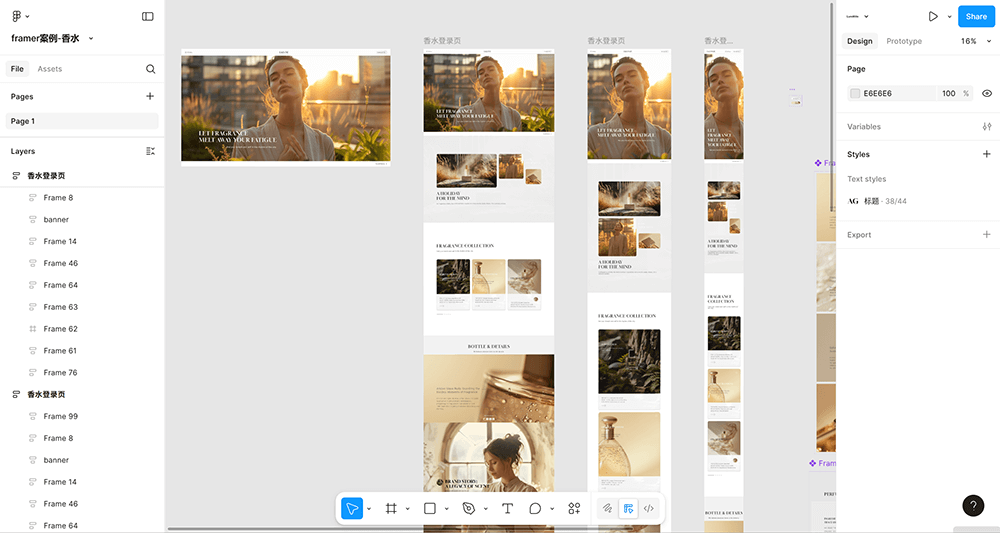
After the contract is signed and the project officially kicks off, the first substantive step in WordPress website design and development is website structure planning and framework design draft creation. This stage reflects internet marketing strategy and showcases the professionalism of UI designers. It can be said that this is the result of high-level intellectual planning and design collaboration, relying closely on the cooperation between SEO experts and UI designers.
1 Core Value of Planning
In this stage, SEO experts and UI designers participate together:
- SEO Experts are responsible for analyzing the client’s brand, products, and services, identifying the target users’ search intent and industry keyword distribution;
- UI Designers, based on the planning results, integrate the keyword strategy with page layout following visual communication principles, ensuring that the website structure is both search engine-friendly and provides users with an intuitive visual experience.
This bidirectional collaboration ensures that the website is closely aligned with search engine optimization and user experience during the design phase, rather than being passively adjusted after launch.
2 SEO keyword management and deployment
During the planning process, we create an SEO Keyword Management Sheet, which serves as an important tool for the entire project. It includes:
- Classification and screening of industry core keywords and long-tail keywords;
- Allocation and deployment of target keywords for each page;
- The correspondence between content and page structure.
By directly integrating keywords into the framework design draft, the website has a solid SEO foundation from the moment it goes live, rather than relying solely on post-launch optimization.
3. Design of page conversion path
Traffic alone is not enough; how traffic converts is the core of marketing design. During the framework design phase, we simultaneously consider the user conversion paths, including:
- Page Layout: Visually guide users from information acquisition to action decisions;
- Feature Placement: Strategically position key interaction points such as inquiry buttons, form entries, and purchase links;
- Conversion Logic: Plan clear business objectives for different pages, such as the homepage for attracting users, product pages for conversions, and case study pages for building trust.
This conversion-oriented planning enables the website not only to attract organic traffic but also to quickly maximize business value after launch.
4. Implementation of the framework design draft
After planning is completed, UI designers present the website structure and conversion paths in the form of a framework design draft. This draft serves as both a blueprint for visual design and a reference for subsequent development, allowing clients to clearly understand the overall layout and functional flow of the website.
The significance of the WordPress website structure planning and framework design draft stage lies in planning the website from the very beginning with a dual focus on SEO traffic acquisition and user conversion, avoiding the common issue in traditional website development where design and marketing are disconnected.
The framework design draft is submitted to Party A for approval or revision
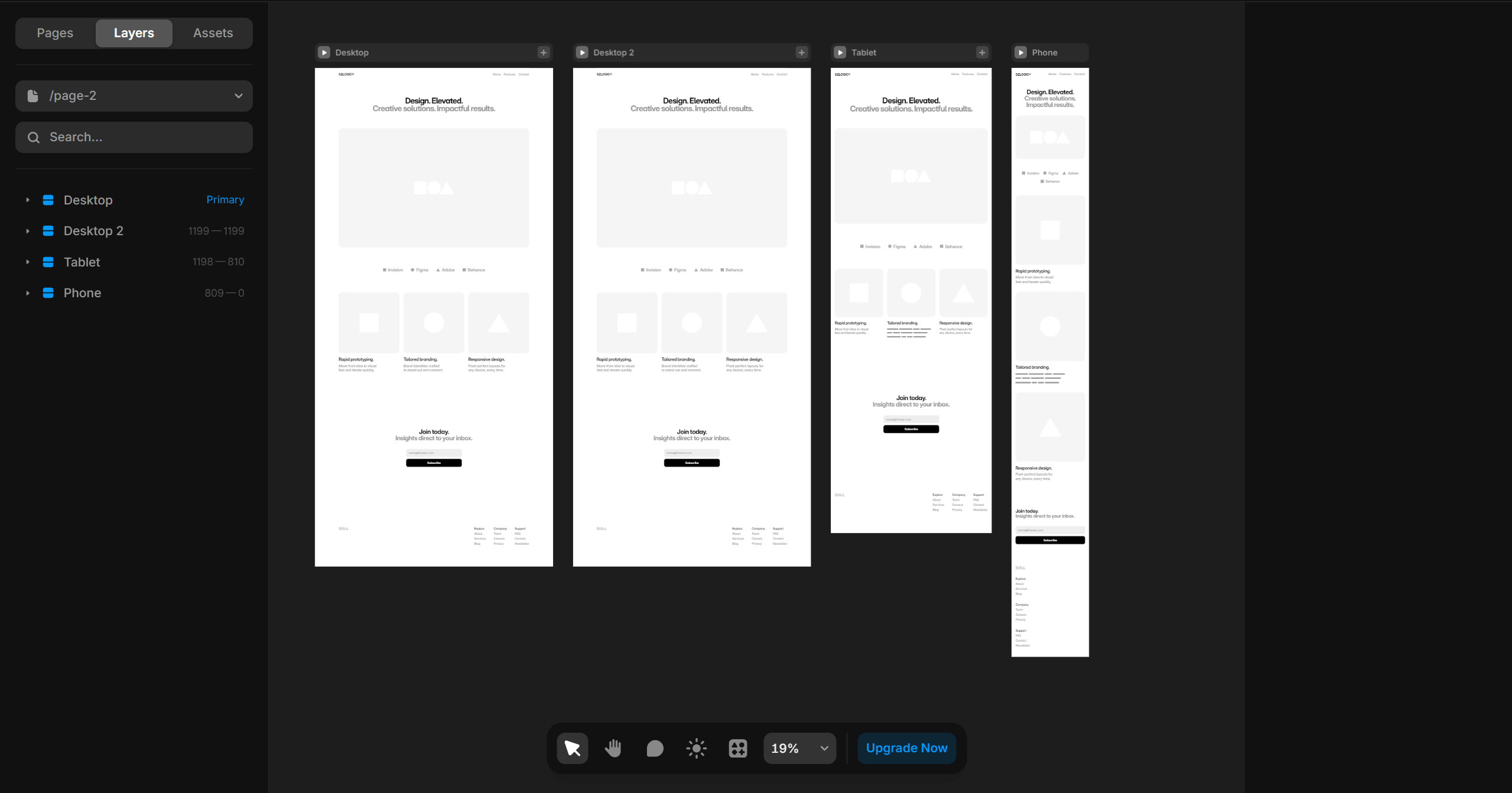
Once LogicThink Digital’s UI designers complete the website framework design draft, the project enters the client review and revision stage. This phase is the client’s first direct exposure to the preliminary design results and serves as a critical transitional point in the entire process.
1. Flexibility in communication methods
We fully consider the actual situation of different customers to choose the form of communication:
- Local Clients (within Guangdong Province): Typically use in-person face-to-face communication to ensure more direct and efficient exchanges;
- Remote Clients (outside the province or overseas): Presentations and discussions are conducted via online meetings (such as Tencent Meeting, Zoom, etc.), ensuring seamless cross-region collaboration.
Regardless of the method used, the goal is to ensure that the client fully understands the structure and logic presented in the framework design draft.
2. Approval Contents of Framework Design Draft
The framework design draft is more than just a page sketch; it serves as a blueprint for website structure and information delivery. When reviewing, the client should mainly focus on the following aspects:
- Overall Website Structure: Whether the navigation, section distribution, and information architecture are reasonable;
- Page Theme: Whether it aligns with SEO-driven criteria;
- Layout and Typography: Whether the hierarchy of content blocks is clear and aligns with users’ browsing habits;
- Color Scheme and Visual Expression: Whether the base colors and tone are consistent with the brand image.
- Website Style: Whether it aligns with the company’s brand positioning
Through this round of review, the client can clearly grasp the project’s progress and provide timely feedback during the design phase.
3 The importance of the approval process
The approval of the framework design draft has a dual role:
- For the Client: This is the first time abstract requirements are transformed into visible visual results, allowing verification of the accuracy of prior communication and requirement clarification;
- For the Design Team: This serves as the foundational confirmation for subsequent visual design and interaction optimization. Only after the client approves the framework design draft can the project smoothly proceed to the next stage.
This means that approving the framework design draft is not only a necessary procedural step but also a key measure to ensure that the design direction aligns with the client’s requirements.
SEO copywriting and production of complete design drafts

After the framework design draft is approved by the client, the project officially enters the SEO copywriting and full design draft production stage. Unlike the earlier phases, the core tasks in this stage rely heavily on the client’s active participation, making it the only key part of the entire process that requires client-led input.
1 Why SEO copywriting must be led by Party A
A high-quality website with marketing value must be the result of a mutual alignment between the design team and the client. Standard image assets and company information can be directly provided by the client; however, SEO copywriting must be led by the client. The reason is:
- The core content of the copy comes from the client’s professional knowledge of their own brand, products, or services;
- Our team cannot fully understand the industry details and business characteristics as Party A in a short period of time;
- Only highly relevant and professional text content has real SEO value and user persuasiveness.
Therefore, this link is not only the copywriting process, but also an important stage for the client's professional knowledge to be reflected in the website design.
2 Our professional support and collaboration approach
Although the copywriting needs to be completed by the client, LogicThink Digital does not simply “step back” at this stage. Our SEO experts provide systematic support:
- Clarify Theme Direction: Using the previously created keyword management sheet, guide the client on the writing theme for each page.
- Writing Method Guidance: Provide the approach and methodology for SEO copywriting, including keyword distribution and optimization of headings and paragraphs.
- Quality Control: After the client completes the initial draft, SEO experts review it and provide optimization suggestions to ensure the content is both professional and search engine-friendly.
It can be described as a “client-led writing + our guidance” collaborative creation model, which ensures both the professional depth of the content and the technical accuracy of SEO.
3. Preparation and approval of complete design draft
Once the SEO copywriting is completed and confirmed, the project enters the full design draft production stage. UI designers, based on the framework design draft and SEO copy, will complete the following tasks:
- Deeply integrate content and visuals to output the final design of each page;
- Design a multi-device responsive layout solution, including desktop, tablet, and mobile versions;
- Fully consider the user experience and conversion path, and achieve unity at the visual and functional levels.
Once completed, the design team submits the full design draft to the client for a second review. Unlike the framework draft, this round serves as the final approval confirmation, determining whether the website’s visuals and content can proceed to the development phase.
The value of this stage lies in jointly creating a complete website solution that is both search engine competitive and engaging for users through the client’s expert knowledge and our team’s SEO guidance and design execution.
WordPress Website Front-End & Back-End Development
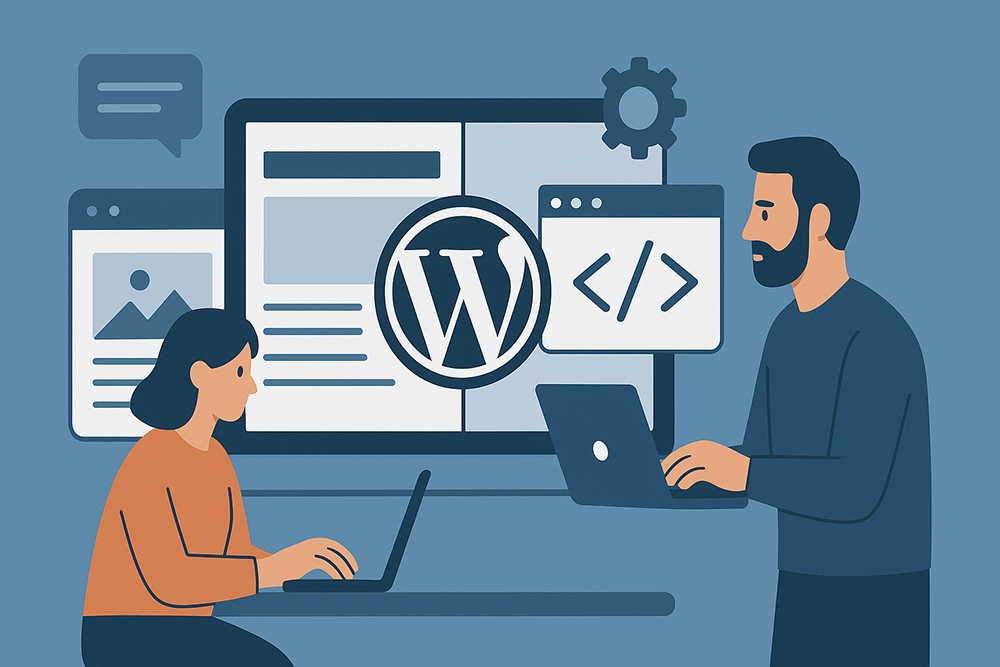
After the final approval of the complete multi-device responsive UI design draft, the WordPress 3-in-1 website design service officially enters the development phase. This stage serves as the bridge between design and practical implementation and is crucial for ensuring that the design results are transformed into a fully functional website.
The composition of the development team varies according to the client’s specific needs: front-end developers are indispensable in all web projects, while back-end developers in WordPress projects are configured “as needed.” Unlike traditional front-end and back-end framework development, WordPress comes with a mature built-in backend system, so not every project requires additional back-end engineers. Back-end developers are only involved when the client’s requirements exceed the capabilities of the native WordPress backend, necessitating custom development.
At this stage, developers strictly follow the design drafts provided by the UI designers for one-to-one standardized development. The UI design drafts not only serve as the client’s reference for confirming website structure and details but also act as an important blueprint for ensuring consistent standards across the front-end and back-end teams.
1. Front-end development: pixel-level restoration design
The primary task of front-end developers is to convert UI design drafts into high-quality code, implementing page typography, layout, interactive effects, and responsive adaptation across devices. Whether for desktop, tablet, or mobile responsive layouts, front-end development must ensure consistency and smooth performance across all devices and browsers.
Additionally, front-end development is responsible for implementing basic interaction logic, such as navigation menus, animation effects, form validation, and interfaces for data interaction with the back-end, laying the foundation for subsequent functionality.
2 Backend development: custom functions on demand
One of WordPress greatest advantages is its built-in comprehensive backend management system, which directly supports most common business website requirements. Therefore, under normal circumstances, the involvement of back-end developers is relatively low.
However, when the client’s requirements involve extensions beyond WordPress’s native functionality—such as complex membership systems, customized e-commerce features, large-scale data processing modules, or deep integration with third-party systems—back-end developers need to intervene for targeted custom development.
This flexible staffing model ensures development efficiency while avoiding unnecessary resource waste.
3. The significance of standardized development of design drafts
Throughout the development phase, the UI design draft plays a particularly crucial role. It serves not only as the basis for visual presentation but also as the core reference for the development team to execute standardized operations. By faithfully reproducing the design draft one-to-one:
- It can ensure that the development results are highly consistent with the design expectations;
- Avoid rework due to communication deviations;
- Provide unified standards for subsequent testing and optimization.
Therefore, the UI design draft is not only a showcase of the design phase but also serves as a “construction blueprint” in the development phase, ensuring consistency and efficient execution.
After the WordPress website is developed, it will be tested internally and submitted to the client for acceptance

Within the contractually agreed delivery timeline, the LogicThink Digital team will complete all WordPress website development work and submit the finished site, developed according to the design prototype, to the client for formal acceptance.
Before submission, we conduct rigorous internal testing to ensure that the website reaches a highly stable and usable state prior to delivery to the client. This process minimizes potential revisions during the acceptance phase and enhances overall delivery efficiency.
1 Internal testing: the first line of defense to ensure quality
Internal testing is a necessary step after development, aimed at identifying and resolving potential issues as early as possible. Key areas of testing include:
- Design Fidelity Check: Compare each page with the design draft to ensure that HTML and CSS properties match the design, achieving pixel-level accuracy.
- Responsive Style Check: Test across different screens and devices, including desktop, tablet, and mobile, to ensure that layouts, fonts, images, and components display correctly at all resolutions.
- Front-End Interaction Testing: Verify that navigation, buttons, forms, animations, and other interactive elements function smoothly and that feedback meets expectations.
- Back-End Function Verification: Test data submission, database queries, and API interactions to ensure correct logic and stable operation.
Through internal testing, the team can resolve issues in-house before delivery, ensuring higher quality when the website is handed over.
2. Submit to Party A for acceptance: confirm the results and propose amendments
After the internal testing is completed and issues are resolved, the website will be submitted to Party A for formal acceptance. This will be Party A’s first full experience of the finished website, marking a critical stage to confirm whether the project deliverables meet the contractual requirements and design prototype.
- If Party A confirms no issues: the website will proceed to the official launch process and enter actual operation.
- If Party A provides revision requests: Party A may submit modification instructions via written documents or a collaboration platform, and our front-end and back-end engineers will address the feedback item by item until Party A confirms no issues.
This efficient feedback and revision mechanism not only ensures that Party A’s input is fully implemented but also shortens the project delivery cycle.
3 From internal testing to launch: reducing risks and improving efficiency
Through the closed-loop process of “internal testing — acceptance — revision,” project risks can be significantly reduced:
- Ensuring that during the acceptance stage, the client is presented with a highly stable website rather than a semi-finished product;
- Avoiding major issues after launch that could impact brand image;
- Ensuring that the website is in its optimal state at launch, laying a solid foundation for subsequent promotion, operations, and SEO optimization.
Website publishing and submission to search engine online operation
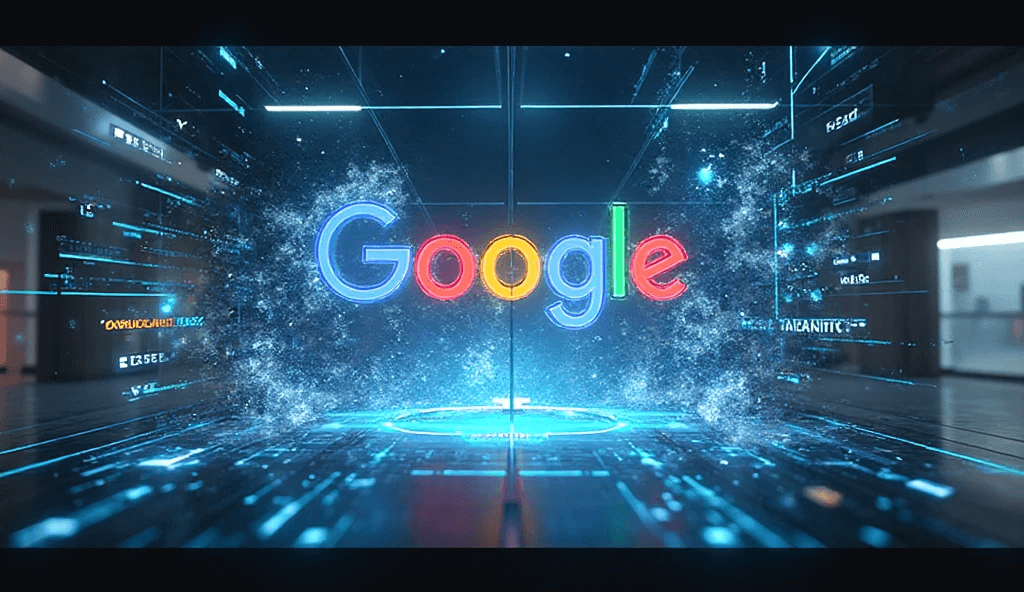
After Party A’s final acceptance and confirmation that all revisions have been addressed, the WordPress website enters the official launch and live operation phase. This stage is not only about making the site publicly accessible but also involves completing technical configurations and search engine submissions to ensure the website quickly enters regular promotion and operational workflows upon launch.
1 Official launch: server deployment and domain name resolution
The first step in launching the website is migrating the finished product from the development environment (during development, Logic Thinking Digital Technology’s server is used) to the client’s server environment, completing server deployment, database migration, and domain resolution binding. We will also configure the SSL certificate to ensure HTTPS is enabled site-wide, meeting basic security and search engine ranking requirements. After going live, a full-site inspection will be conducted to confirm that page loading, functionality, and data interactions are consistent with the test environment.
2 Search Engine Submission and SEO Basic Settings
To ensure the website is quickly indexed and recognized by search engines, our SEO experts will perform the following steps:
- Generate and submit the sitemap (Sitemap.xml) to major search engines such as Google Search Console, Bing Webmaster, Yandex Webmaster, and Baidu Search Resource Platform.
- Optimize the Robots.txt file by properly configuring crawler rules to ensure important pages are indexed while preventing unnecessary pages from wasting crawler resources.
- Configure basic SEO tags for the website (such as Title, Meta Description, and structured Schema data) to ensure core pages have a solid foundation for crawling and ranking.
- Connect and verify webmaster platforms with search engines to enable ongoing monitoring of indexing, traffic, and SEO performance.
These actions ensure the website can be indexed more quickly and gradually acquire organic search traffic during subsequent operations.
3. Value realization: a complete closed loop from design to commercial operation
At this point, all stages of the “WordPress Three-in-One Website Design Service Process” have been fully completed. From requirement communication, contract signing, structural planning, framework design, and SEO copywriting, to front-end and back-end development, testing and acceptance, and finally deployment and launch, every step is closely aligned with the core goal of “visual design + user experience + marketing design” integration.
The website’s launch and submission to search engines not only signify the completion of the project delivery but also mark a new starting point for the company’s digital marketing. Through our full-process service, the client will receive a high-quality WordPress website that not only showcases brand value but also supports SEO-driven traffic and conversion capabilities.
Conclusion
WordPress web design and development is not merely a technical execution but a systematic process. From the initial stages of requirement communication, project quotation, and contract signing, to structure planning, wireframe design, SEO copywriting, front-end and back-end development, testing and acceptance, and finally website launch and submission to search engines, every step is closely aligned with the service philosophy of visual design, user experience, and marketing design integration.
This end-to-end process control not only ensures the website’s unique visual expression and user-friendly interaction experience, but also equips the site with the capability to acquire search engine traffic and optimize conversions at the business operation level, truly realizing the "closed-loop value from design to marketing".
If you are looking for a professional team that understands both design and user experience, while also delivering SEO marketing value for your business, then LogicSi Digital Technology, Shenzhen is the trusted partner you need. We specialize in WordPress website solutions integrating visual design + user experience + marketing design, helping your corporate website stand out and become an effective digital growth tool.
Contact LogicSi Digital Technology now to fully upgrade your WordPress website from design to operation!
This article is copyrighted by Logic Digital Technology (SZLOGIC) . Personal sharing and learning are welcome. Unauthorized use for any commercial purposes or reproduction of this article is strictly prohibited.



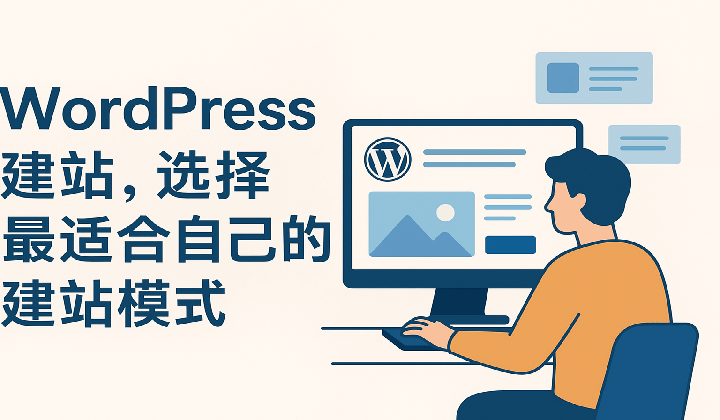
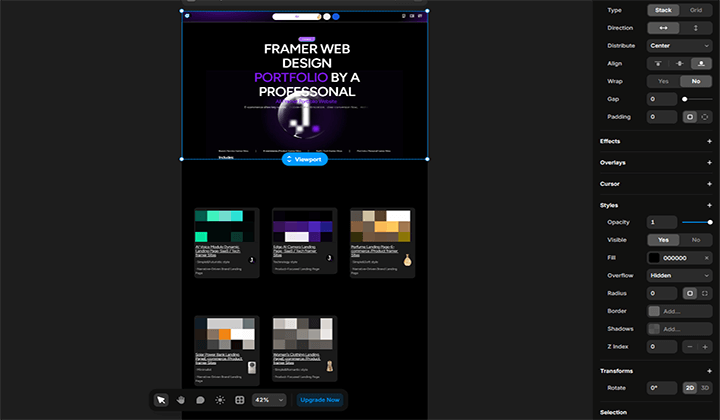

官网.png)



